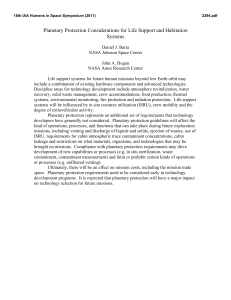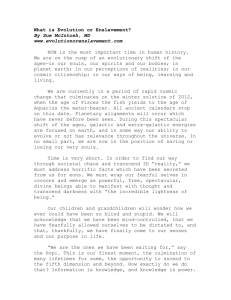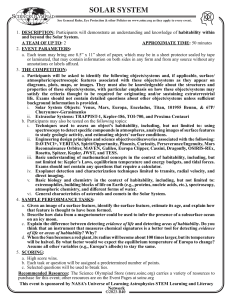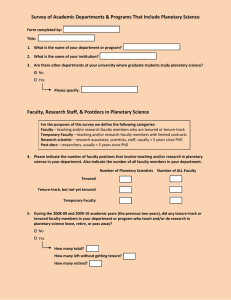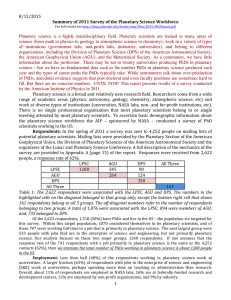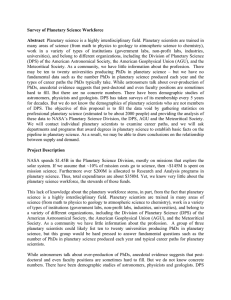Life in Extreme Environments; Searching for Life Beyond Earth Discussion coordinators:
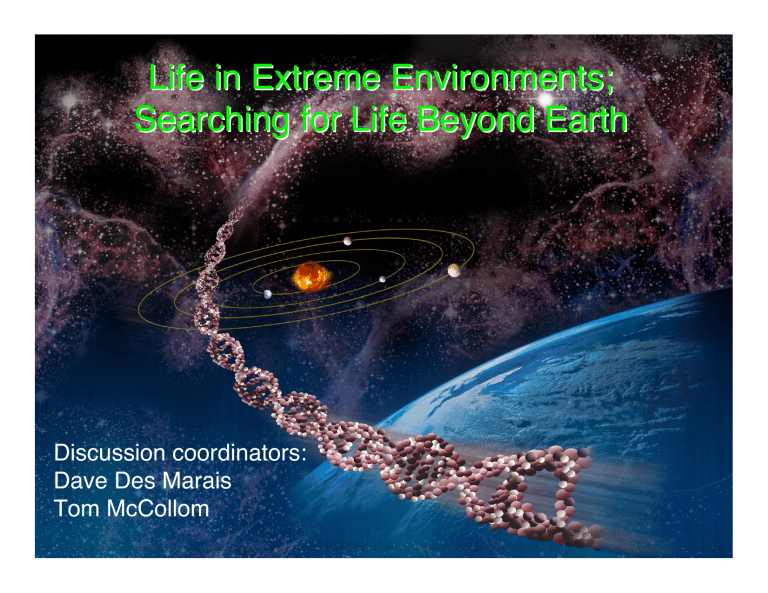
Discussion coordinators:
Dave Des Marais
Tom McCollom
Extending our Concepts of Life
• Origins on Earth
– What environments and evolutionary paths allowed the key components of living system(s) to develop?
– What evolutionary paths led to the array of attributes shared by all modern organisms?
• Determinism
– Do “nurturing” environments usually lead to life?
– To what extent do physical and chemical factors cause life elsewhere to resemble our own?
• Diversity
– Does Earth’s biosphere represent a subset of the
(much greater?) diversity of life in the universe?
– What are the ultimate environmental limits of life?
Extreme environments offer insights about the evolution of life
A Definition of Life
Life is the harnessing of free energy to sustain and perpetuate, by molecular replication and evolution, a high density of information in the form of complex molecules and functionally-related larger structures
Biosignature Categories
• Cellular and extracellular morphologies
• “Biomarker” molecular structures
• Biofabrics: microscale biogenic rock textures
• Community-level structures, e.g., stromatolites
• “Biomarker” minerals
• Biogenic stable isotope patterns
• Light from inhabited extrasolar planets
Requirements for (our) Life
(Tori Hoehler)
Source of Energy
Source of Carbon
Source of Electrons
Microbiologists classify organisms based on how they fulfill these needs
Water
Nutrients
Preserve the
Functional
Complexity!
When and where did (does) this set of conditions exist on Mars and beyond?
The big “ “ H ” ” --Habitability
How does a planetary system become habitable?
Des Marais
End
Features of All Living Systems on Earth
• Cellularity: To define and retain cytoplasm content
• Cells require between 50 & 90 wt. % water to function
• Covalently-bonded C, H, O, N & P compounds dominate, but trace elements (e.g., transition metals) crucial
• Small number of molecules that, as a set, universally comprise most of cell mass
• Most of cell mass consists of carbohydrates, lipids, nucleic acids and proteins
• Energy flow involves formation or hydrolysis of phosphate bonds, usually ATP
Features of All Living Systems on Earth
• Universal core network of biochemical reactions: intermediary metabolism (glycolysis, TCA cycle, etc.)
• Biochemical information is structural, not dynamic (e.g., cells taken to 0 K can recover completely
• Sustained life is the property of an ecosystem, rather than an individual cell or species
• Universal lipid bilayer structure; cell walls optional
• In replication, info. flows from DNA to RNA to proteins
• Other universal key molecules in replication include ribozymes, t-RNAs and activating enzymes
• Reactions with appreciable rates are enzyme-catalyzed
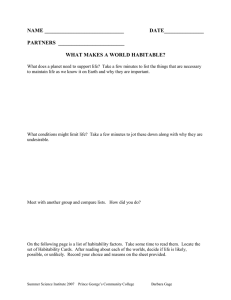
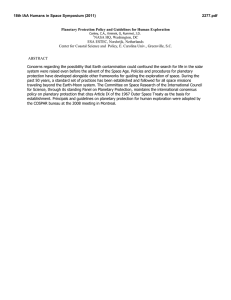
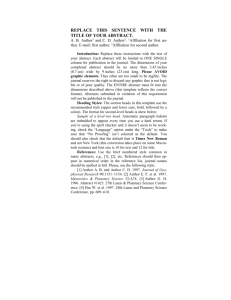
![Wednesday, April 13, 2011 PLANETARY PROTECTION AND ASTROBIOLOGY PANEL [#2053]](http://s2.studylib.net/store/data/014555840_1-6c9a28d92e63e65082da76842f8c4375-300x300.png)
